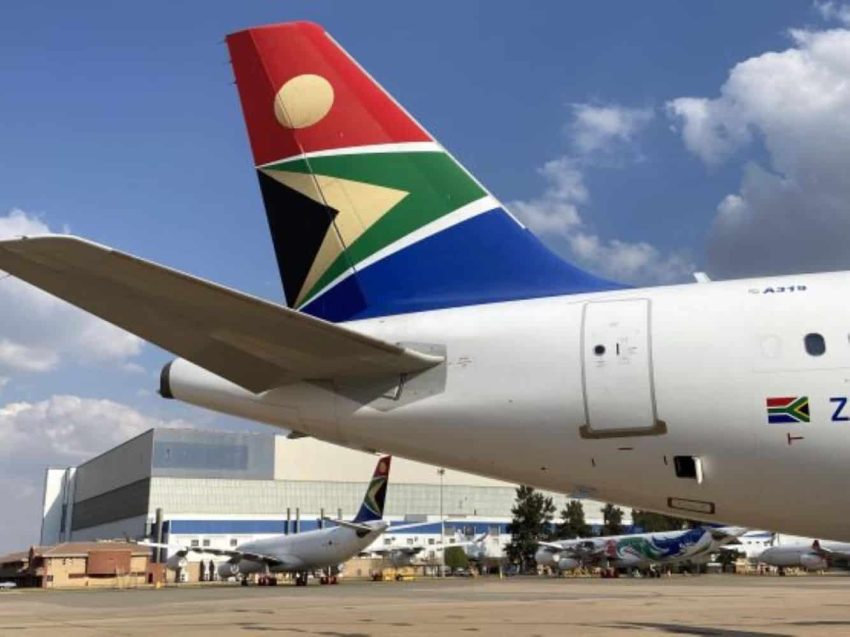Reports a R352m loss for the last financial year after a R210m profit in 2024.
Soaring fuel prices and a 30% increase in plane leasing costs pushed airline operator South African Airways (SAA) into a R352 million loss for the year to March 2025, despite a 23% increase in revenue to R7 billion.
This follows a R210 million profit the prior year.
Rand volatility resulted in currency translation losses of R415 million.
The airline was hit with several external shocks, such as a 46% increase in fuel costs to R1.9 billion due to the Ukraine conflict and a global shortage of aircraft which pushed up leasing costs by 30%.
Delays in the delivery of budgeted aircraft had a negative impact in revenue and earnings before interest, tax, depreciation and amortisation (Ebitda), which reversed from a positive R436 million in 2024 to a negative R90 million in 2025.
The cash position remains strong at R1.4 billion at year-end. It also has zero borrowings and R6.4 billion in equity.
The airline received R50.7 billion in government bailouts between 2007 and 2022.
ALSO READ: Has SAA turned the corner or is it flying too close to the sun?
Routes and aircraft
SAA currently serves 17 destinations, including two intercontinental routes to Perth in Australia, and São Paulo in Brazil.
In January this year it extended services to Dar es Salaam in Tanzania and Lubumbashi in the Democratic Republic of Congo, bringing its total coverage to 17 destinations in 12 countries.
Through the Star Alliance with 25 other member airlines, it provides services to 192 countries.
In the 2024 financial year it operated just 10 aircraft serving 15 destinations.
The number of destinations increased 42% over the last financial year, with new flights into Africa and flights to São Paulo from both Johannesburg and Cape Town.
Earlier this year it expanded its fleet to 20, announcing plans to expand this further to 25 before yearend.
This compares with its fleet of 49 aircraft in 2019, prior to being placed in business rescue. The airline was taken out of business rescue in 2021.
The airline’s waning financial position was aggravated by the Covid shutdowns in 2020, resulting in the suspension of services to long-haul destinations such as London, New York and Hong Kong.
ALSO READ: SAA quietly lifts off as load factors show signs of recovery
‘Strategic reconstruction’
“These results detail a phase of intense uncertainty in the resuscitation of SAA as the assumption of the company’s control by the strategic equity partner was awaited,” says Group CEO John Lamola.
“Since then, we have entered a period of structured and strategic reconstruction of the business, focusing on institutionalising robust governance and management systems, whilst implementing plans on aircraft fleet and route network expansion and elevation of customer experience”.
The latest financial results mark the last of the outstanding audits from the business rescue period, with all prior year adjustments now resolved.
A case in point is R431 million recognised as a prior year adjustment to retained earnings rather than sundry income in the current year. This amount relates to business rescue creditor obligations.
ALSO READ: SAA heading for crash unless equity partner comes on board
Audit Health Plan
To strengthen its financial reporting, SAA says it has launched a programme called Audit Health Plan to standardise key controls, expand internal audit capacity and strengthen collaboration with external auditors.
“After six consecutive audits in three years, SAA is firmly back on track to meet all statutory reporting deadlines, and to devote its efforts towards improved audit outcomes,” says the company in a statement.
Despite the loss for the year, Lamola believes SAA is on the recovery track.
“We have strengthened the channels of our revenue streams and cost containment measures; we have a debt-free, asset-rich balance sheet that is supporting the steady growth of the airline and the recovery of SAA as a global aviation brand.”
This article was republished from Moneyweb. Read the original here.
